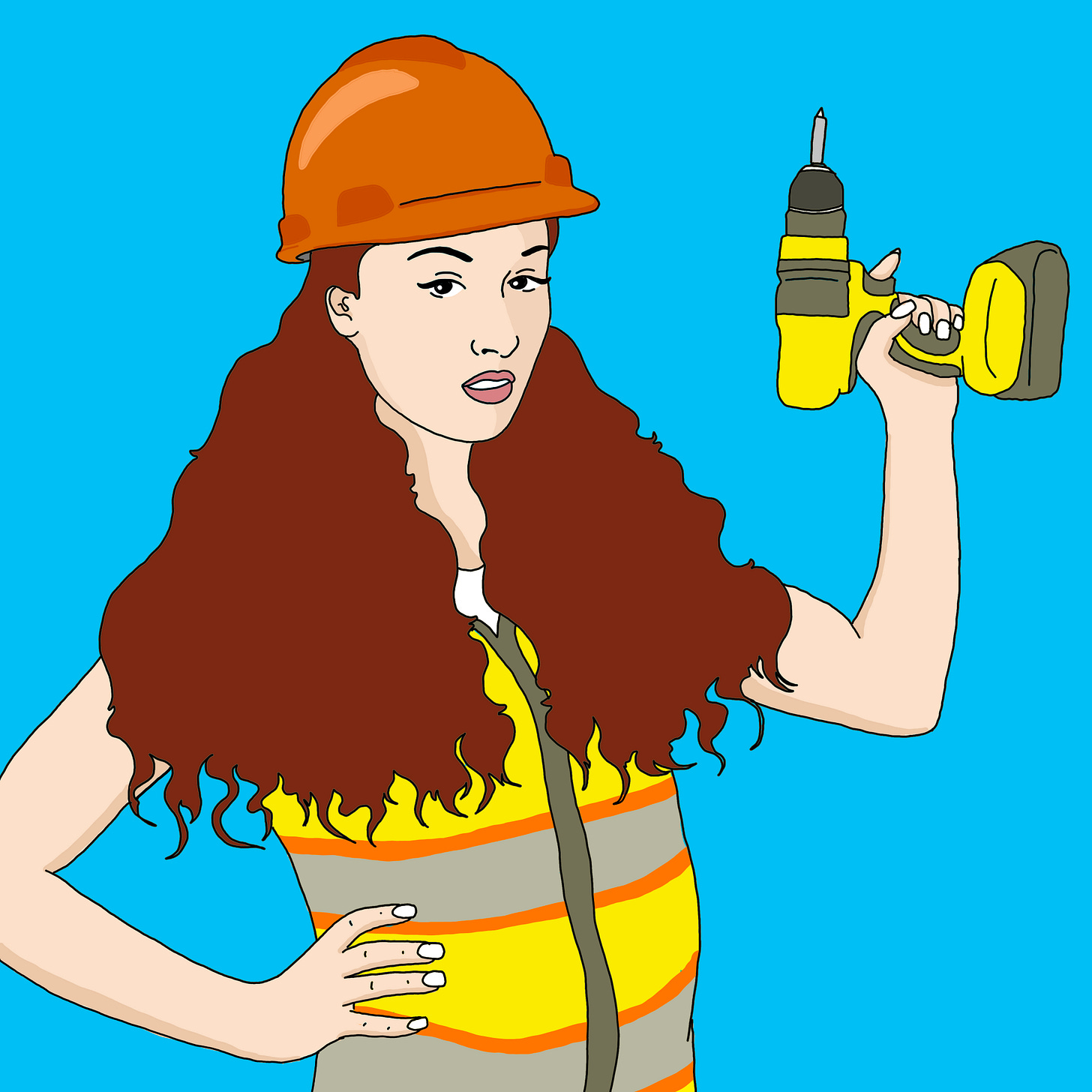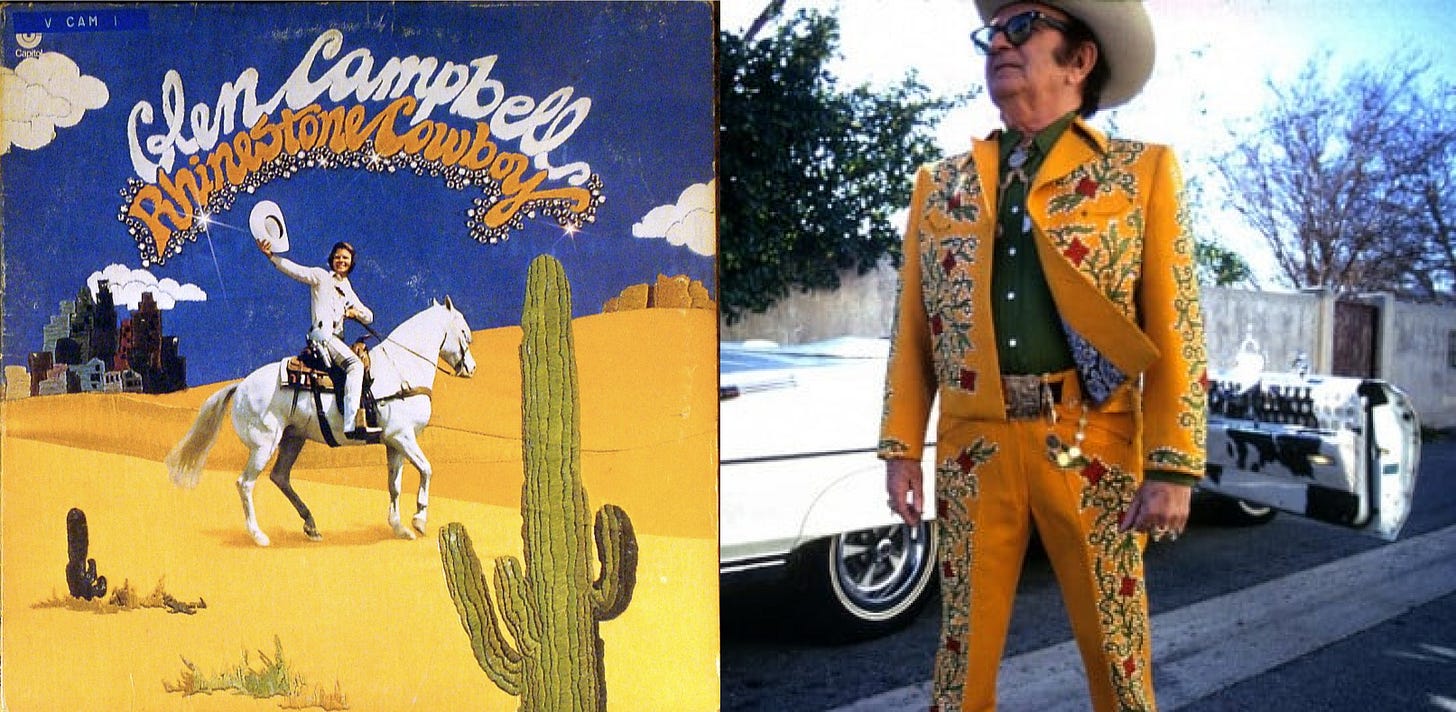Hair Metal, Rhinestones, and Drag
How Chappel Roan's "The Giver" Unravels Country's Hidden Gender Performance
Listen to the full episode on Apple Podcasts, Spotify, or anywhere you get podcasts
When Chappel Roan took the stage at the 2025 Grammy Awards to accept her Best New Artist award, she was already building anticipation for "The Giver," which had been previewed on SNL and would soon debut at number one on Billboard's Hot Country chart. Her explicitly queer country anthem brings together seemingly disparate musical worlds in a way that illuminates country music's long-standing relationship with gender performance, visual excess, and musical cross-pollination.
The move is particularly striking given Roan's breakthrough with "Pink Pony Club," a queer pop anthem celebrating the Abbey, a gay bar in West Hollywood, where she found her identity. In her own words, it was the first place she "could truly be herself and not be judged." From this celebration of queer space, Roan's pivot to country music might seem unexpected, but as we'll see, the connections run deeper than they first appear.
During her Grammy performance of "Pink Pony Club," Roan offered visual hints of what was to come. Her band members were decked out in 1980s hair metal attire while backup dancers wore rodeo clown outfits. This peculiar fashion choice wasn't random, it was foreshadowing the cultural bridge Roan was building between queer pop aesthetics, the testosterone-fueled world of hair metal, and Nashville's rhinestone cowboys.
From Nudie Suits to Leather: The Visual Language of Excess
To understand Roan's artistic statement, we need to look at what these genres share: a love of performative excess. Country music's visual language has long embraced flashy presentation through iconic Nudie suits, elaborate, rhinestone-covered outfits created by Ukrainian-born designer Nudie Cohn. These dazzling ensembles became the signature look for stars like Glen Campbell, who immortalized the style in his hit "Rhinestone Cowboy."
The connection between these bedazzled country suits and the leather-clad hair metal bands of the 1980s isn't immediately obvious, but both aesthetics share a commitment to theatrical self-presentation. Groups like Def Leppard, Kiss, Poison, Motley Crue, and Twisted Sister pushed visual boundaries with their teased hair, makeup, leather, studs, and colorful accessories. Though they weren't intentionally performing in drag, these bands inadvertently created a hyper-masculine aesthetic that incorporated traditionally feminine beauty practices—voluminous permed hair, eyeliner, mascara, and even lipstick became markers of rock credibility.
This unintentional gender-bending in hair metal mirrors what Chappel Roan is doing deliberately, playing with gendered expectations in a genre that has traditionally been defined by them. Her performance doesn't merely appropriate country tropes but reveals their inherent theatricality.
The Sonic Bridge: How Mutt Lange Connected Metal to Nashville
The musical connection between hair metal and country isn't just visual, it runs through the DNA of the production itself, largely thanks to legendary producer Mutt Lange. In the 1980s, Lange defined the sound of hard rock with his work on AC/DC's "Back in Black" and Def Leppard's "Pour Some Sugar on Me," creating a signature style characterized by meticulous production, layered vocals, and most distinctively, massive drum sounds with huge, cavernous reverb.
When hair metal fell out of fashion in the 1990s with the rise of grunge, Lange didn't disappear—he simply brought his sonic palette to country music through his collaboration (and marriage) with Shania Twain. Their partnership produced hits like "Any Man of Mine" and "Man! I Feel Like a Woman" that revolutionized country music's sound. These tracks essentially transplanted hair metal's sonic DNA into country arrangements, maintaining the massive drums, pristine production, and arena-ready sensibility.
This sonic inheritance soon became a staple in country music. Artists like Carrie Underwood ("Before He Cheats"), Toby Keith and Willie Nelson ("Beer For My Horses"), and notably, Big & Rich ("Save a Horse, Ride a Cowboy") all incorporated elements of this rock-infused country sound throughout the 2000s. When Roan creates the rhythmic hook in "The Giver" that directly echoes Big & Rich's signature song, she's acknowledging this lineage while reclaiming it for a new purpose. In fact, Roan told Apple Music that she explicitly wanted to make a song in this style, saying "I love 'Save a Horse, Ride a Cowboy.' I was like, how can I, I want to feel that way on stage."
Recoding Country's Narrative: The Lyrical Subversion
"The Giver" brilliantly employs country music's conventional imagery while subtly subverting its traditional gender dynamics. The song is loaded with standard country references—antlers on walls, lifted trucks, Friday nights at the bar—but Roan flips these masculine signifiers through her queer perspective.
From its opening lines, the song plays with country clichés that quickly turn into double entendres: "Ain't got antlers on my walls, but I sure know mating calls from the stalls and the bars on a Friday night." Later, she continues with bro-country satire: "Girl, I don't need no lifted truck... 'cause how I look is how I touch," a line that sharply pivots away from Nashville conventions into something more transgressive.
When she sings about a "strip mall town of dreams" and finding someone to "rhinestone cowgirl all night long," she's layering cultural reference upon cultural reference. She nods to Glen Campbell's iconic song while transforming the "rhinestone cowboy" into a sexual euphemism that centers female pleasure. This wordplay allows her to position herself within country tradition while simultaneously challenging its heteronormative assumptions.
The song's bridge further cements this connection, with backing vocals that deliberately evoke Big & Rich's "Save a Horse, Ride a Cowboy." By adopting the vocal style of a song that itself played with sexual innuendo and country stereotypes, Roan creates a direct dialogue with country music's recent past while writing herself into its future.
The musical authenticity is undeniable. "The Giver" incorporates all the sonic markers of country: fiddle (or as country players would insist, "fiddle, not violin"), a mix of electric and acoustic guitars, and even banjo buried in the mix. Most importantly, Roan adopts a nasal twang in her delivery, the essential country signifier.
Country Music's Long Tradition of Dressing Up
What makes "The Giver" so effective is that it recognizes country music has always been about performance and appropriation. Despite its reputation for authenticity and tradition, country has consistently absorbed elements from other genres from folk and blues, to rock and, more recently, hip-hop. Even Big & Rich's "Save a Horse" incorporated elements of the "bling rap" style popularized by Cash Money Records artists in the late 1990s.
When Roan dresses her band in hair metal attire while performing a country song with queer themes, she's not subverting country so much as participating in its longstanding tradition of borrowing and transformation. She's simply making explicit what has always been implicit: country music has been "dressing up" in other people's clothing for decades.
This is perhaps the most ingenious aspect of "The Giver," it honors country's traditions and influences while expanding who gets to participate in them. By bridging these worlds (queer pop, hair metal excess, and country traditionalism), Chappel Roan isn't just creating a hit song; she's offering a masterclass in how musical genres evolve through dialogue, appropriation, and reinvention. "The Giver" demonstrates that country music's strength has never been its purity, but rather its ability to absorb, transform, and revitalize itself through continuous cultural exchange.









This was kind of my era…late 70's was truly the best.
I figure that there were time constraints in this episode, but there was definitely a missed opportunity to close the loop of Chappell’s homage to 80s hair metal gender bending style by not mentioning Rob Halford and Judas Priest being progenitors. His leather and spikes queer style had a lasting impact on music of the decade and the metal genre as a whole. Commenting about that would have turned the hyper-masculinity of hair metal on its head and demonstrated that Chappell’s drag persona fits right in with her historical influences. Great episode. You guys always have fascinating takes on popular music.